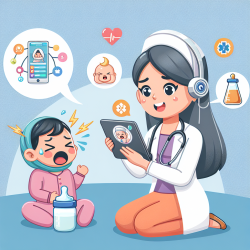Understanding the Connection: Mental Stress and Violent Injuries
In the realm of speech-language pathology, particularly when working with children and adolescents, understanding the broader context of mental health and its implications is crucial. The study titled Violent Injuries Among College Students in China: An Exploration of Gender Mental Stress Model provides valuable insights into the gender-specific mental stress model of violent injuries among Chinese college students. This research is not only pivotal for practitioners but also emphasizes the importance of data-driven decisions in developing effective prevention strategies.
Key Findings from the Study
The study utilized a cross-sectional, multistage sampling process, engaging 5,025 college students from 22 universities in China. The findings revealed a prevalence of violent injuries at 4.40% among male students and 5.20% among female students. Interestingly, the study highlighted that higher mental stress, attending lower-level universities, and coming from rural areas were associated with a higher likelihood of violent injuries among male students. Conversely, female students showed an inverted relationship with university type and violent injuries.
Implications for Practitioners
For practitioners, particularly those involved in online therapy services like TinyEYE, these findings underscore the importance of considering gender-specific factors when addressing mental health and violent injuries. Here are some actionable insights:
- Gender-Specific Interventions: Develop interventions that are tailored to the unique stressors faced by male and female students. Recognize that mental stress plays a significant role in violent injuries among males, while other factors might be more pertinent for females.
- Focus on Environmental Factors: Consider the impact of the students' environment, such as university type and family background, when designing therapeutic approaches. This holistic view can lead to more effective outcomes.
- Promote Mental Health Resources: Encourage the development and accessibility of mental health resources that address stress management, particularly for students in lower-level universities and rural areas.
Encouraging Further Research
While this study provides a comprehensive overview of the factors associated with violent injuries, it also opens the door for further research. Practitioners are encouraged to explore additional environmental variables, such as regional location and economic development, to gain a deeper understanding of the underlying causes of violent injuries.
Conclusion
The findings from this study highlight the intricate relationship between mental stress, gender, and violent injuries among college students. For practitioners, integrating these insights into therapy and intervention strategies can significantly enhance outcomes for children and adolescents. By focusing on data-driven decisions and understanding the broader context of mental health, we can contribute to reducing the prevalence of violent injuries and promoting a healthier, safer environment for students.
To read the original research paper, please follow this link: Violent Injuries Among College Students in China: An Exploration of Gender Mental Stress Model.










